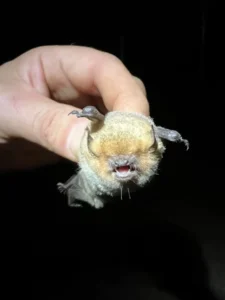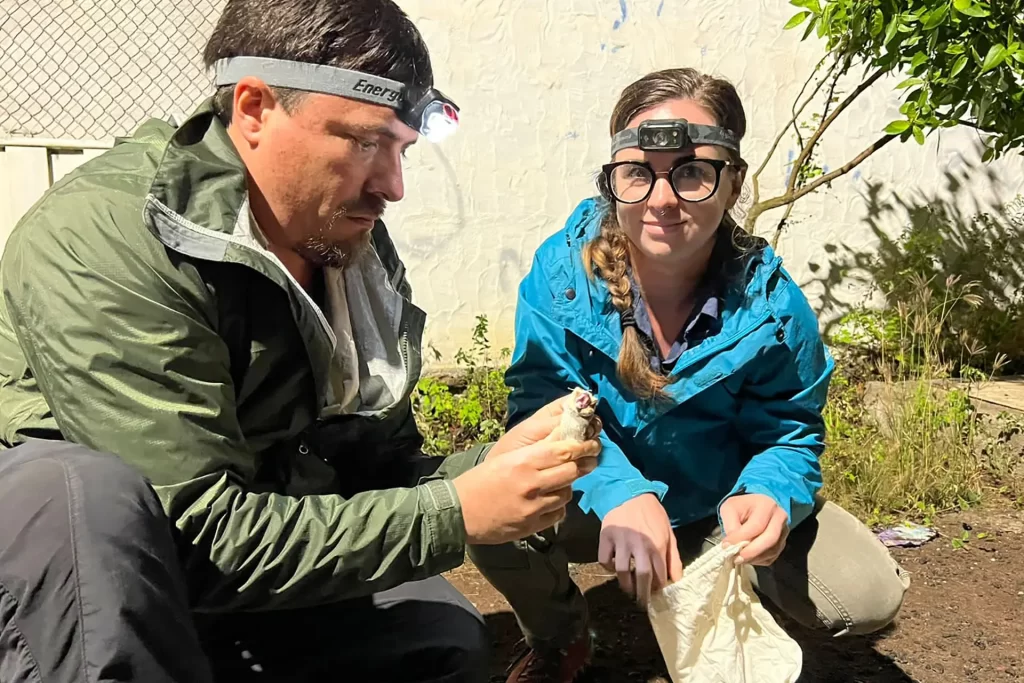Galapagos’ unique biodiversity is still waiting to be explored, especially in the fascinating nocturnal ecosystems of many islands. There are still many questions about two bat species: the gray bat and the red bat. Are these Galapagos populations of these bats really distinct? Do they fly from one island to another? We don’t even know the most basic information about them, such as where they prefer to live and their daytime roost.
A collaborative research project is currently underway between the Galapagos National Park Directorate and the Universidad Particular de Loja with funding provided by the Galapagos Conservation to shed more light on these fascinating flying mammal. The project aims to uncover the secrets of Galapagos’ bats.
Strategic Collaboration Unveils Bat Secrets
Since September 2020, the research team and collaborators of the Galapagos National Park Directorate have been searching for bats in the islands of Santa Cruz and San Cristobal. Isabela and Floreana are also being explored. The team is studying the life of bats through the sounds they make at night and inferring their patterns of behavior. During their research, the team has solved several mysteries.

©DPNG
The team found that after three years of research bat activity patterns are seasonal, and closely tied to insect abundance, which is the primary food source for bats. The team also placed radiotransmitters onto bats in order to gain a unique insight into their habits, movements and resting places during the day. Bats are found in an array of habitats including those that have been invaded by vegetation.
Researchers have found that bat activity peaks around 11:00 PM. They captured bats both in natural settings and under artificial lighting. The density of bats also varies depending on the location. The study showed a concentration of bats in the area of Colorada Lagoon on San Cristobal Island. This could be due to bats being attracted to water bodies where insect food is abundant. The large difference in males and females in both species raises concerns about the population status of these species, highlighting the importance of further research.
This study is a major step forward in the understanding of Galapagos Bats, and has a far-reaching impact that goes beyond science. In order to achieve this, a comprehensive training program was given to park rangers, as well as other community members in San Cristobal, which laid the foundation for a stronger and more efficient collaboration with the goal of conserving the bats of the archipelago. Tapia emphasized that “proper team preparation maximizes not only the quality of data collected, but also ensures the legacy of research will endure through strengthening local capacities for the conservation of Galapagos Bats.”
The Next Steps in Bat Protection
The research team will conduct a genetic analysis on Galapagos Bats after collecting biological and audio samples. This analysis will give a deeper understanding of the genetic diversity of Galapagos bats by island and their movement between islands, as inferred by patterns of gene flows among bat populations. The team also laid the foundation for a long term monitoring program using advanced techniques to collect data on these species’ distribution and abundance.
We owe our gratitude to the generous donors who made these studies possible. We emphasize the importance in partnering with Galapagos National Park Directorate who are our main allies for research and conservation. It is vital that we work together to preserve species like the bats on this archipelago.

©DPNG



